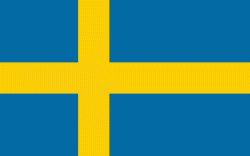Stockholm Municipality (Stockholms Kommun)
 |
Although legally a municipality with the official proper name Stockholms kommun, the municipal assembly (kommunfullmäktige) has decided to use the name Stockholms stad (City of Stockholm in English) whenever possible. This is purely nominal and has no effect on the legal status of the municipality.
Geographically, the city comprises the Stockholm City Centre and two suburban areas, Söderort (South Stockholm) and Västerort (West Stockholm). Administratively, it is subdivided into 14 districts (sometimes incorrectly called "boroughs" in English), which are administered by district councils (stadsdelsnämnder).
Geographically, the City of Stockholm comprises the central part of the capital (Innerstaden or Stockholm City Centre) as well as the southern and western suburban parts (Söderort or South Stockholm and Västerort or West Stockholm respectively). Of the municipal population, all but 200 people are considered living in the Stockholm urban area, a tätort further extending into ten other municipalities.
Map - Stockholm Municipality (Stockholms Kommun)
Map
Country - Sweden
 |
 |
| Flag of Sweden | |
Nature in Sweden is dominated by forests and many lakes, including some of the largest in Europe. Many long rivers run from the Scandes range through the landscape, primarily emptying into the northern tributaries of the Baltic Sea. It has an extensive coastline and most of the population lives near a major body of water. With the country ranging from 55°N to 69°N, the climate of Sweden is diverse due to the length of the country. The usual conditions are mild for the latitudes with a maritime south, continental centre and subarctic north. Snow cover is infrequent in the densely populated south, but reliable in higher latitudes. Furthermore, the rain shadow of the Scandes results in quite dry winters and sunny summers in much of the country.
Currency / Language
| ISO | Currency | Symbol | Significant figures |
|---|---|---|---|
| SEK | Swedish krona | kr | 2 |
| ISO | Language |
|---|---|
| FI | Finnish language |
| SE | Northern Sami |
| SV | Swedish language |
















